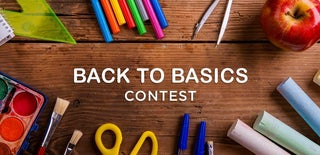Introduction: Back to Basics: Soldering for Kids
Whether you’re building a robot or working with Arduino, form "hands-on" electronics to prototyping of a project idea, knowing how to solder will come in handy. soldering is an essential skill to be learned if someone is really into electronics and making.
Learning to solder is relatively straightforward but it takes a little bit of practice to become a master.
In this Instructables, I'll share how my kids enjoy learning and mastering this important skill.
Supplies
You will need:
- A soldering Kit
- Perdboards
- Some electronic components like LEDS, resistors, etc
- Power Supply
Step 1: Soldering Vocabulary
Soldering: Soldering is a process in which two or more items are joined together by melting solder around the connections providing reasonably permanent but reversible connections.
Solder Wire: (Pic 2) It is a metal alloy which is usually made up of a Tin/Copper alloy(60% tin, 40% lead). It comes in both lead and lead-free variations with diameters of .032″ and .062″ being the most common. Due to environmental and health concerns, for electronics soldering, the most commonly used type is lead-free rosin core solder. This type of solder is usually made up of a Tin/Copper alloy.
Safety Tip: If you do use lead solder make sure you have proper ventilation and that you wash your hands after use.
Soldering Iron: (Pic 3) One of the most important tools used in soldering, soldering iron is a handheld tool that is used to heat the solder above the melting point of the metal alloy. It has an insulated handle and a heated pointed metal iron tip. The tip can be changed according to different soldering applications. The most common tips you will use in electronics projects are the conical tip and the chisel tip. Different varieties of soldering iron are available in the market. As a beginner, 40W fixed temperature soldering iron will work great.
Warning: Be careful whenever you are handling the soldering iron as the tip is hot enough to leave a serious burn on someone’s skin.
Flux: (Pic 4) In soldering flux is used as a chemical cleaning agent that helps prevent oxidation and clean any oil, dirt, or other impurities that might be present at the site of the joint. The flux used is rosin flux which helps the mechanical strength and electrical contact of electrical joints.
Soldering Station: (Pic 5) A soldering station holds hot soldering iron and keeps solder and tip cleanly organized. It also has space to keep flux and sponge. The sponge helps to remove any oxidation that gets collected on the tip of the soldering rod. Tips with oxidation will tend to turn black and have reduced adhesiveness with solder.
Solder Sucker: (Pic 6) It is used to undo soldering mistakes or to make a correction to the electronic circuit. It is a handheld vacuum like toot that sucks up hot solder with a press of a button.
Step 2: Preparing the Soldering Iron
Place the soldering iron in its stand and plug it in. and wait for the soldering iron to heat up. Once it is heated clean the tip of the iron with a damp.
Now, melt a little solder on the tip of the iron. This is called tinningand it will help the heat flow from the iron's tip to the joint. The solder should flow onto the tip, producing a bright shiny surface. If the solder does not flow onto the tip, clean it by wiping it on the wet sponge again. When tinned, wipe excess solder off on the wet sponge. You do not need to tin the tip before every joint, but you should re-tin it if it has gone dull when the soldering iron has not been used for a few minutes.
Step 3: Practicing 1: Coin
Use a coin or any other low-cost metal for practicing accuracy by soldering onto a specific point on them. Practice heating up the area being soldered and letting the solder flow onto it rather than simply touching the solder and letting it drip.
Make sure to lift the soldering iron upwards once the correct amount of solder has been applied. This helps release the melted solder from the soldering iron.
Applying solder quickly is important because if you take too long, the component can burn and will sometimes no longer be usable.
Step 4: Practicing 1: Perfboard
Once you have practiced enough on the coin grab a perfboard and try applying solder to several points in a row to improve your precision. Notice how on one side of the board there are copper rings around the holes. This is the bottom of the board and the copper rings are called "pads" or "doughnuts". You need to insert your components (LEDs, Resistors, etc) through the top of the board and soldered to the pads on the bottom.
You can even draw the 10 dots with a pencil and then solder as closely onto those as fast as you can or to add a little fun draw some alphabets or math sign and practice applying solder as quickly as you can to avoid burning/damaging the components.
Step 5: Mini Soldering Projects
Soldering is something that you really only improve at by doing, so the best way to get better is to just do as much soldering as you can. Pick up small projects like making circuits with one or more LED before moving on to real projects.
Step 6:

Participated in the
Back to Basics Contest











